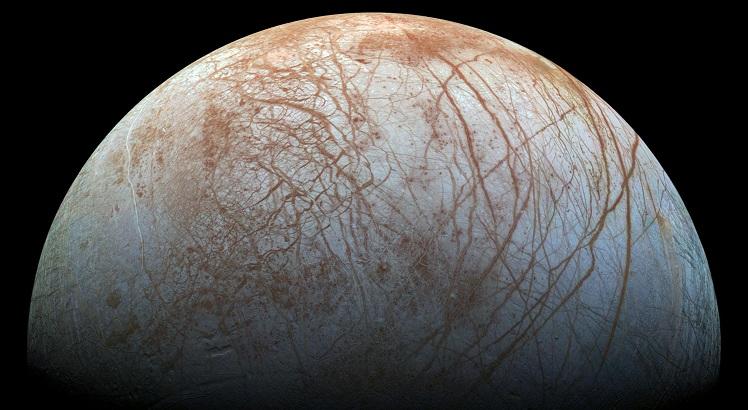
Por Jean-Louis Santini (AFP)
A Nasa planeja revelar nesta segunda-feira novos "sinais surpreendentes de atividade" em uma lua de Júpiter, Europa, que podem confirmar a presença de um oceano sob sua espessa camada de gelo, onde poderiam existir organismos vivos.
Estes resultados de uma campanha de observação com o telescópio espacial Hubble serão apresentados durante uma coletiva de imprensa esta tarde.
Água pode ter chegado à Lua levada por asteroides, diz estudo
O que a missão Juno espera encontrar em Júpiter?
A Nasa não ofereceu detalhes adicionais sobre esta apresentação, na que participarão o diretor da divisão astrofísica da agência, Paul Hertz, e o astrônomo do Space Telescope Science Institute de Baltimore William Sparks.
Segundo os cientistas, Europa, uma das 67 luas de Júpiter, é "o lugar do nosso sistema solar onde atualmente há a maior probabilidade de se encontrar vida" fora da Terra.
Estudos anteriores da Nasa já tinham detectado indícios da presença de um oceano de água líquida nesta lua de Júpiter, que estaria situado a cerca de 100 km de profundidade, sob uma espessa camada de gelo, onde poderiam existir organismos vivos.
"O ciclo de oxigênio e hidrogênio constitui um motor importante da química do oceano da Europa e, por tanto, da vida que poderia existir, exatamente o mesmo que acontece na Terra", concluiu Steve Vance, do Jet Propulsion Laboratory (JPL) da Nasa, em um estudo publicado em maio passado pela revista americana Geophysical Research Letters.



